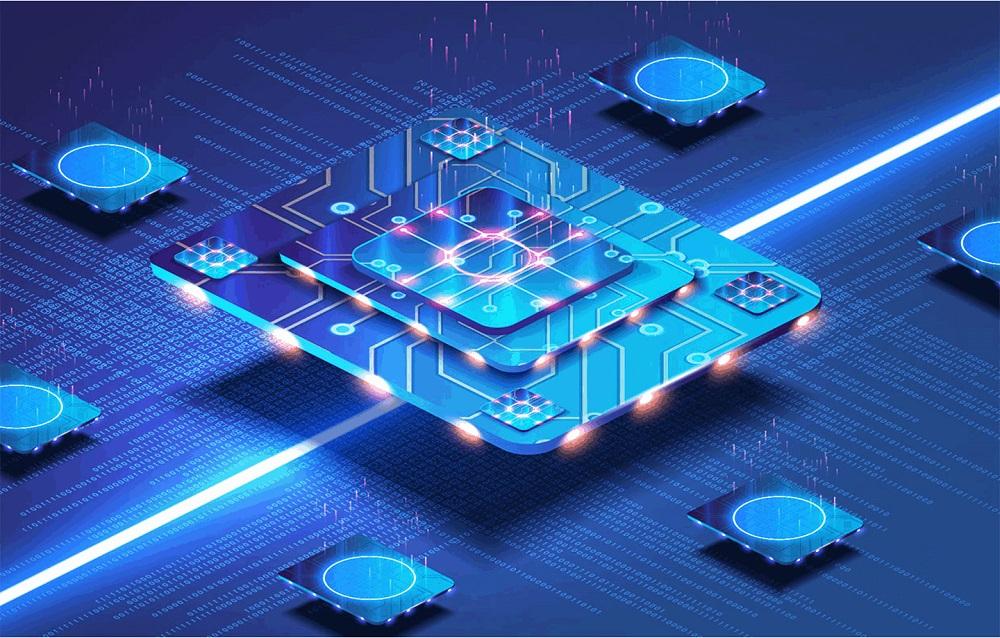Neuromorphic computing, also known as biological or brain-inspired computing, represents a revolutionary new approach to computing that aims to mimic the human brain. While conventional computers use the von Neumann architecture with separate memory and processors, neuromorphic chips take inspiration from the brain's architecture, processing data in parallel rather than sequentially. As we approach the limitations of conventional computing, neuromorphic chips may provide a path forward for vastly more powerful and efficient computing.
What are Neuromorphic Chips?
Neuromorphic chips, sometimes called neurocomputers, are designed to function more like brains versus traditional von Neumann computers. Rather than relying on a CPU and separate memory, neuromorphic chips have vast numbers of parallel computing elements that mimic nerve cells (neurons) and synapses. Information is stored in the connections between these elements rather than in a separate memory bank. This allows for massively parallel distributed processing akin to how the brain functions.
Neuromorphic chips accomplish this through two key methods. First, they integrate memory and computing power together in artificial neuron and synapse circuits. The strength of connections between these circuits encodes memory and enables learning and adaptation. Second, communication between neurons uses sparse distributed representations and asynchronous events more like spiking neurons in the brain versus synchronous digital signals in traditional chips. Combined, this enables neuromorphic processors to perform certain cognitive tasks much more efficiently than conventional architectures.
Applications of Neuromorphic Computing
Some of the applications that are well-suited to neuromorphic computing include:
Computer Vision - Our brains can recognize images and video with superhuman capabilities. Neuromorphic Chips aim to perform visual recognition and processing with far greater efficiency through approaches like deep convolutional neural networks inspired by the visual cortex. This could enable new applications in areas like autonomous vehicles, industrial inspection, and medical diagnostics.
Machine Learning - Deep learning has achieved human-level performance on complex tasks but requires massive amounts of power to continually train huge models. Neuromorphic chips could vastly shrink the size and power needs of neural networks by emulating their biological architectures. This makes on-device learning possible for everything from smartphones to embodied robots.
Robotics - The combination of computer vision and machine learning will be key to building more intelligent robots. Neuromorphic chips could one day provide human-level cognition and general intelligence by harnessing the efficiency of the brain's computational paradigm. This would remove many of the barriers currently preventing advanced robotics from becoming widely applicable.
Cognitive Computing - Applications requiring complex cognitive abilities like comprehension, planning, and decision-making under uncertainty could all benefit from neuromorphic approaches. By mimicking general intelligence instead of just deep learning, neuromorphic chips will push new frontiers in areas like conversational assistants, expert systems, and other forms of artificial general intelligence (AGI).
Major Advancements in Neuromorphic Chips
Several recent developments showcase both the progress and promise of this emerging technology:
- IBM's TrueNorth chip achieved 1 million neuromorphic cores and 100 billion synapses on a single wafer in 2014, demonstrating the degree of parallelism possible. Further generations continue advancing toward human-scale cortical models.
- Intel's Loihi chip introduced in 2018 used a novel spike-time dependent plasticity model to enable on-chip learning and adaptation without a host CPU. This helped prove the viability of fully-embedded neuromorphic systems.
- BrainChip's Akida NSoC introduced in 2021 integrated an advanced spiking neural network processor with a traditional ARM CPU, allowing existing algorithms to be ported and accelerated on the same chip.
- IBM's hybrid CMOS-memristor tech from 2021 densified synapses hugely, packing over 4 billion into just 1 mm^2 - a density 100,000x that of the human brain but in a highly-scalable form factor.
As chipmakers work to address challenges with neuron/synapse models, interfacing methods, programming models, and more, neuromorphic systems are becoming increasingly functional and capable of tackling real-world problems. The future will likely see broader research and commercial adoption across many industries.
Overcoming Hurdles to Bring Neuromorphic Computing to Market
While neuromorphic computing offers clear advantages over conventional architectures, a number of hurdles remain before it can reach mass commercialization:
- Neuron & Synapse Modeling - Developing realistic yet easily implemented models of spiking neurons and synapse dynamics that faithfully recreate their biological counterparts is an area of ongoing research.
- Programming Models - Low-level event-driven programming is difficult; high-level tools and frameworks are needed to access neuromorphic hardware's power through familiar interfaces like TensorFlow.
- System Integration - Connecting neuromorphic processors to other chips, memory, and I/O while dealing with issues like heat and bandwidth bottlenecks requires extensive engineering.
- Algorithm Development - Determining how to best map existing algorithms to neuromorphic circuits and developing new algorithms from the ground up optimized for this paradigm will take time and collaboration.
- Fabrication Costs - Current prototype neuromorphic chips are often fabricated using expensive specialist processes; utilizing mainstream CMOS technologies could vastly lower costs.
While challenges remain, continuing exponential growth of AI workloads and Moore's Law slowing is concentrating minds on alternative computing approaches like neuromorphic engineering. With sufficient further progress and investment, commercial neuromorphic solutions may emerge within the decade to take specialized and even general computing to a new level of scalability and intelligence. The future of computing itself may depend on whether engineers can overcome the final hurdles to fully unlock the power of thinking in spikes.
Neuromorphic computing based on biological principles represents a paradigm shift from von Neumann architectures that could vastly improve the scalability, efficiency and capabilities of future computing systems. Recent advances demonstrate that emulating the brain's architecture through innovative chips is achievable, though challenges remain to fully replicate its abilities. If the field can address programming, integration and other issues, neuromorphic technology may one day provide a path to human-level artificial intelligence through massively parallel spiking networks. The potential for this disruptive approach to transform computing makes continued progress and commercialization well worth pursuing.
Get more insights on this topic: Neuromorphic Chips
Explore More Articles: Medical Batteries Market



